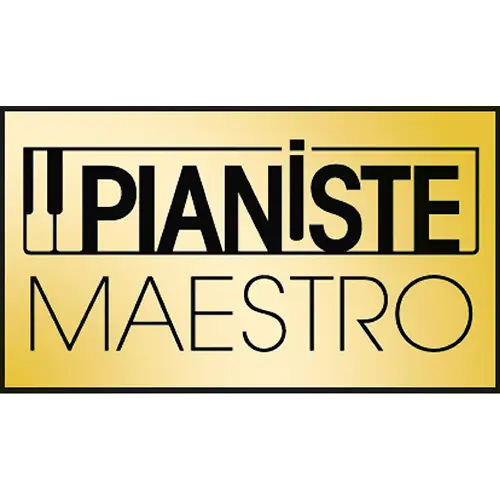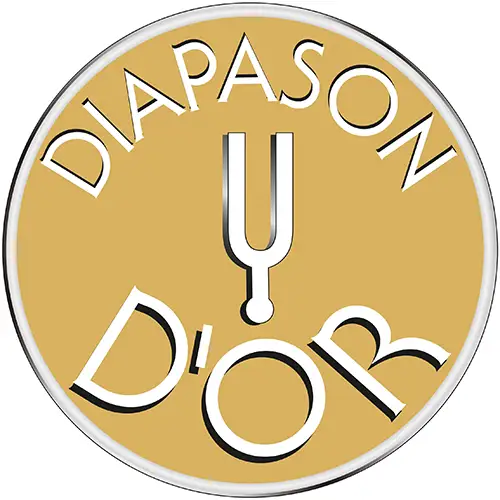We interpret tradition with a contemporary slant as illustrated by the K 132 Tradition which is inimitable in its combination of the traditions of German artisan piano manufacturing, innovative construction and contemporary design. This is perfection and aesthetics which will continue to enchant future generations.


Konzert Concept (Konzert): This is an innovative design concept, developed and patented by Schimmel in 2000 based on the idea to implement all outstanding characteristics of our full size concert grand K 280 into this series where possible. For example, we are using the similar scale layout from tone 44 up to tone 88. Also, the soundboard design is similar to a grand piano. This way we transfer a big part of the sound characteristic of our K 280 also into our Konzert uprights. The action keyboard design is optimized to achieve a repetition as fast as an average grand piano.
Our hammer heads are made from highly elastic merino felt with high flexibility and low damping properties. The felt is made from the highest quality merino wool in a traditional fulling process in Germany. For the hammer cores, we use hardwoods in combination with tension-regulating under felts. The result is a great richness of tone colours in the different dynamic levels, as well as long-lasting tones due to low damping effect on the strings (short contact period due to highly elastic felt).
Due to the different physical conditions, grand pianos usually play better than upright pianos. However, by optimizing the lever ratios in the concert mechanism, it has been possible to achieve a significant improvement in touch. For example, the mechanism is now designed so that the repetition is just as high as on an average grand piano.
"Mineral key tops" are used for flat keys on all Schimmel instruments. These were developed by Schimmel and offer a more sensitive touch for pianists. In addition to this secure and sensitive touch, they are "glare-free" thanks to the matt surface, which s particularly advantageous for the pianist, especially on stages with spotlights.
The keybed is firmly connected to the strungback by a three-point support, thus ensuring a resonance-link. In addition, the extremely stable, multi-layer glued keybed is pre-tensioned with an adjustment function in a process patented by Schimmel. This also ensures increased climate stability of the action regulation. As with our grand pianos, sound resonances are also specifically amplified, resulting in richer tone colours. The vibrations also create an improved possibility of interaction with the instrument when playing the piano.
All the resonance woods that produce the sound we call tone wood. For this we use mountain grown spruce from the Bavarian and Bohemian forests, the origin of tone wood of the German instrument makers. For this we only use perfect wood, grown slowly at high altitudes, so that soundboards can be joined that have optimal resonance characteristics. The trees are pre-selected in the forests and then specially cut and dried over long periods of time. Even with this intensive pre-selection, only about 2% of the timber obtained in this way is suitable for our soundboard production.
The production of the soundboard is a complicated and lengthy process. The thickness of the soundboard at the various points, the wood moisture of the assembled parts and the subsequent "tension" of the soundboard when joining the soundboard to the strungback are just a few factors that have a major influence on the soundboard. Our extensive process ensures a richness of sound in all dynamic ranges, and even development of sound in all registers and long-sustain. Depending on the sound character that is to be achieved, our soundboards are manufactured differently. Soundboards with a membrane-like finish are particularly difficult to produce, but also deliver excellent vibration characteristics.
The bridge transfers and distributes the vibration of the strings into the soundboard. Schimmel invented the so called mass-reduced bridge so that the bridge can withstand the string tension, transmit the energy optimally and at the same time prevent the soundboard from vibrating freely as little as possible. This involves milling a dynamic contour into the flanks of the bridge, which ensures that the richness of the sound is increased, and the sustain gets longer. An innovative idea that still received a patent even after more than 300 years of traditional piano making.
The "Dynamic Sound Bar" is clamped to the soundboard during the production of the soundboard. This regulates the flow of energy in the soundboard when playing at different volumes, thus ensuring a wider range of sound characteristics depending on the attack and volume. This is what we call high tonal dynamics. Depending on the size and shape of the soundboard, we use either one or two dynamic sound bars to achieve the best possible result. (see table)
The string layout, the so-called scale, of a large concert grand offers optimal physical properties for an impressive grand piano sound. For all Schimmel grand pianos, as well as all Konzert and the large Classic upright pianos C 126 and C 130, we have therefore transferred the middle register and the treble (tone 44 to 88) scale into all mentioned models identically from our large concert grand K 280. In this way, we achieve the same sound characteristics as with a large grand piano.
An appendix of a string are areas of strings that are not made to vibrate directly by the hammer head, but will vibrate through energy transfer and generate partial tones that provide even more richness of sound and longer sustain and can strongly influence the sound character. These areas are very sensitive and need to be crafted with precision to sound right. For this reason, we use CNC manufactured scales. The scales of our Konzert grand pianos can even be tuned afterwards, so that they can later be voiced by ear. Depending on the model, either no scale, one or two scales are used, resulting in one, two (duplex) or three (triplex) sound-producing sections of a string.
We use pin blocks made of thin hardwood layers so that the instrument keeps its pitch optimally and is easy to tune. These pin blocks were developed by Schimmel in the 1950s as so-called "tropical climate resistant" pin blocks and have proven themselves over the decades.
The lid of the instrument protects the interior (closed) and when playing the piano also serves to reflect the sound (open) in the direction of the piano player (upright piano) or the audience (grand piano). With upright pianos, the lid can usually be raised in one position. Grand piano lids can be raised in multiple positions, so multiple variations of sound reflection can be chosen. We have imitated this grand piano lid on selected upright piano models. The lid opens horizontally and vertically and thus allows different sound reflecting positions. It sounds good and also looks beautiful.
Traditionally, pianos are equipped with small metal castors. From our experience, these are rarely used. The risk of damaging the floor is quite high. For this reason, we equip our pianos with high-quality gliders that are coated with Delrin from below. This allows for easier gliding on smooth hard floors and reduces the likelihood of damage to floors. In addition, the front gliders can be adjusted in height to compensate for uneven floors. This prevents the instrument from twisting and improves the tuning and the regulation stability.
Schimmel offers an extended manufacturer's warranty through its network of appointed dealers. Because we trust and stand by the quality of our instruments.
As early as the 1980s, Schimmel worked with computers to improve the design of its instruments, making the company a pioneer in the piano industry. Since then, the use of computers for research and development has been constantly further developed and today, under the name CAPE (Computer Assisted Piano Engineering), it represents a unique and all-encompassing software solution into which decades of development work and research results have contributed. On this basis, new ideas and designs are constantly being created that set standards in the industry.
On this basis, the use of CNC machines for the production of precision parts has been promoted since the 1990s. These are then added to our instruments exclusively by hand and are a prerequisite for achieving the highest quality.
Environmental protection and sustainability have been part of the company philosophy at Schimmel since the company was founded in 1885. This starts with the quality of our instruments. With a Schimmel instrument, you are purchasing a durable product that will be used for many years, often for generations. Which industry can say that it repeatedly receives requests for spare parts for its products that are more than 100 years old? Durability conserves resources. In addition, we manufacture our instruments from predominantly renewable raw materials - domestic wood from certified forestry and wool - and our cast iron plates are made in an elaborate process from recycled scrap metal. Wood leftovers and shavings from production are used to heat production in winter, and we generate solar power on the roof of the factory. Biofilters and a modern heating system complete our production. And of course, we produce according to high German environmental standards. This is true not only in our manufactory in Braunschweig | Germany, but also in Kalisz | Poland. In China, the production of our Fridolin instruments is environmentally certified according to ISO 14001 to ensure our high standards of environmental protection and sustainability here as well.
| Model series | K 132 |
| Model | Tradition |
| Height (cm | inch) | 132 | 52″ |
| Width (cm) | 149 |
| Depth (cm) | 62 |
| Weight (kg | lbs) | 263 | 580 |
| Finish | Ebony high gloss | Mahogany high gloss |
| Standard hardware | Brass |
| Optional hardware to order | Chrome matte | Chrome gloss |
| Manufacturer | Wilhelm Schimmel Pianofortefabrik GmbH |
| Country of origin | Braunschweig | Germany |
| Action | Schimmel action made by Renner | Germany |
| Keyboard | Complete production Braunschweig |
| Keyboard coating | Mineral | Ebony |
| Number of keys | 88 |
| Approx. keybed height from floor to underside keybed / keytop (mm) | 670 | 775 |
| Pedals | Piano Pedal (links) | Moderator/twintone (mittig) | Tonhaltung (rechts) |
| Installation of self player possible | no |
| Installation twintone ex works | retrofit at dealer's workshop* (*from year of manufacture 2019) | yes | yes |
| Steel strings high performance spring steel with precise partial tone development | High-performance steel by Pitthan | Germany |
| Bass strings | made by Schimmel |
| Duplex / Triplex scale for definition see product details | Triplex |
| Box frame construction with solid hard wood liners inlaid in mountain grown spruce. Combines high stability against bending forces with high energy reflection | yes |
| Three-dimensional crowned and tension loaded soundboard | membrane shaped cut |
| Bridge: solid beech capped by 5 layers of maple wood crosswise glued | made by Schimmel |
| Cast iron made traditionally | yes |
| Piano lid design | horizontal and vertical similar to grand piano lid |
| Glider/castor as standard (exchange to glider / castor is possible upon request) | Glider |
| Soft close fallboard standard | no |
| High gloss finishes are made of premium piano lacquer by layering process and hand polished | yes |
| Manufactured according to following standards | German Environment Standards |